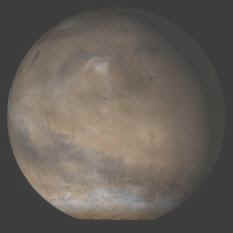Astronomy
4800 Astronomy
1.00 Unit Wt.
1.05
PD/WK 05
Offered in Grades 11,12
Prerequisite: Two regents level science courses (one preferably Earth Science),
Sequential Math A
This course is a qualitative, descriptive
astronomy course that deals with all of the sub-topics of astronomy: celestial
sphere; seasons; time; motion. A full year course project is required.
![]()
RANDOM TIDBITS
Selenologists study the Moon, as geologists study Earth.
***
The planet Venus does not tilt as it goes around the Sun, so consequently, it has no seasons. On Mars, however, the seasons are more exaggerated and last much longer than on Earth.
***
Scientists believe that hydrogen comprises approximately 90 to 99 percent of all matter in the universe
***
45% of Americans don't know that the sun is a star.
***
The sun's surface can reach 9,980 degrees Fahrenheit, but at its core, it can reach 27 million degrees.
***
It takes eight minutes for sunlight to reach Earth
***
The sun burns off the equivalent in weight of 12 ocean liners every second.When Voyager 2 visited Neptune it saw a small irregular white cloud that zips around Neptune every sixteen hours or so now known as "The Scooter".
The Sun travels at a speed of 155 miles per second, but it still takes 230 million years for it to complete a single revolution of the galaxy.
If it were possible to drive through space at 75mph (120 km/h), you could reach the sun in a little over 142 years. But at that same speed it would take more than 38 million years to reach the stars of the Alpha Centauri system, the closest to ours.
Source: "Reader's Digest Book of Facts"
A cumulonimbus cloud can be enormous: six miles across and
eleven miles high, and twice as high as Mount Everest.
The name of the asteroid that was believed to have killed the dinosaurs was named Chixalub. (Pronounced Sheesh-uh-loob)If a baseball-sized piece of a supernova star (known to
astronomers as a pulsar) were brought to Earth, it would
weigh more than the Empire State building.***
The temperature on the Moon reaches 243 degrees Fahrenheit
at midday on the lunar equator. During the night, the
temperature falls to -261 degrees Fahrenheit.
***An area of the Sun's surface the size of a postage stamp
shines with the power of 1,500,000 candles.
***
Temperature variations on Mercury are the most extreme in
the solar system, ranging from 90 K to 700 K.
***
The moons of Mars are called Phobos and Deimos after two
mythical horses that drew the chariot of Mars, the Roman
god of war.
***
The Moon weighs 81 billion tons.***
The first person to report a finding on an attempt to measure the distance to the Sun was a Greek astronomer, Aristarchus, who lived in the 3rd century B.C. Unfortunately, the number he came up with was completely wrong, some 20 times too small. It wasn't until the past 100 years that scientists have made more accurate measurements.
***
Phobos, one of the moons of Mars, is so close to its parent
planet that it could not be seen by an observer standing at
either of Mars poles. Phobos make three complete orbits
around Mars every day.All the moons of the Solar System are named after Greek and
Roman mythology, except the moons of Uranus, which are named
after Shakespearean characters.
M.V.E.M.J.S.U.N.P.
To remember the order of the planets use the phrase 'My
Very Eager Mother Just Served Us Nine Pizzas' - the capi-
tal letters give the order of planets, beginning with
closest to sun - Mercury, Venus, Earth, Mars, Jupiter,
Saturn, Uranus, Neptune, Pluto.
Dog Days
Meaning: The hottest days of summer.
The Ancient Romans believed that there was a period during
the summer when "the brightest star in the heavens, the dog
star 'Sirius,' added its heat to the sun's, making these days
veritable inferno."
***
Suggested Websites
http://www.astronomy.com/Calendar/Default.asp This is a good link to see what’s going on each day.
www.skyandtelescope.com is another good one. It has an observing section
http://spacewander.com/USA/english.html A simulated space flight.

Latest Photos from the Mars Global Survey
